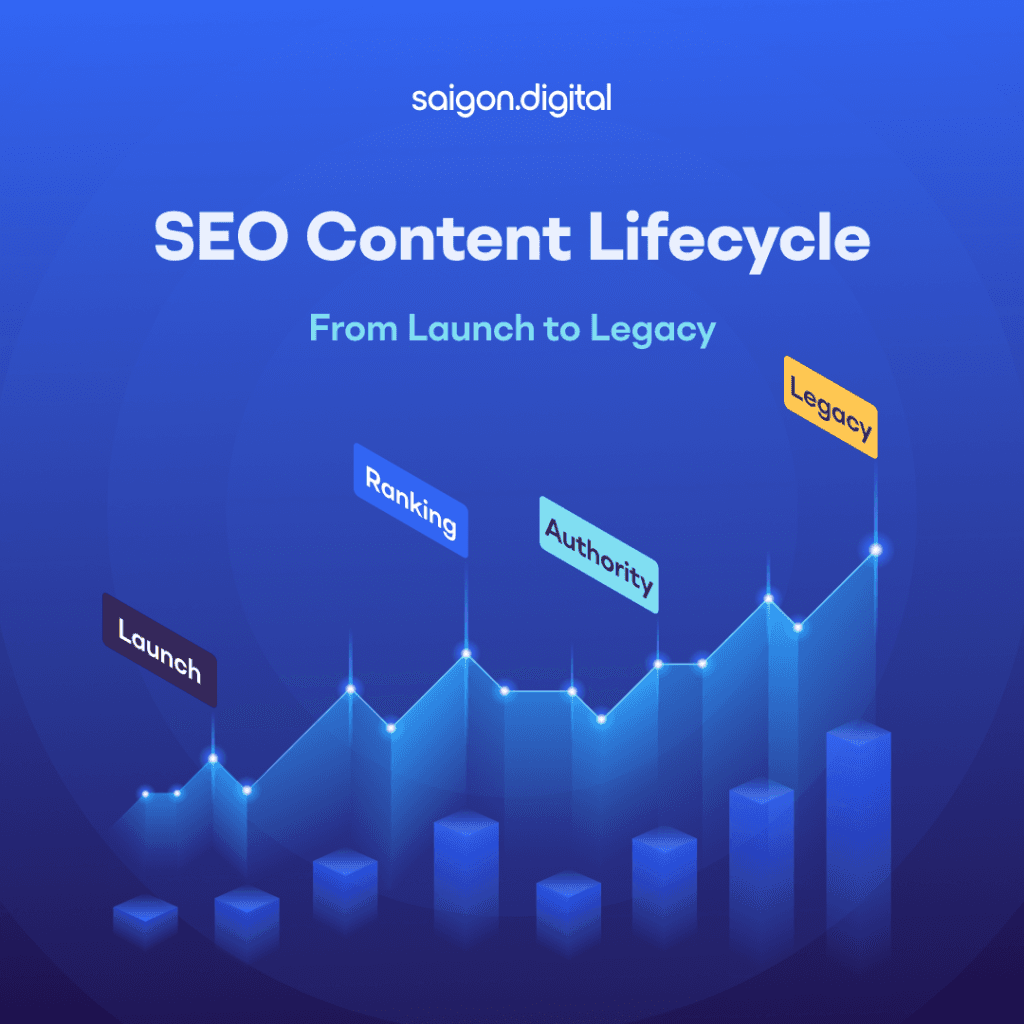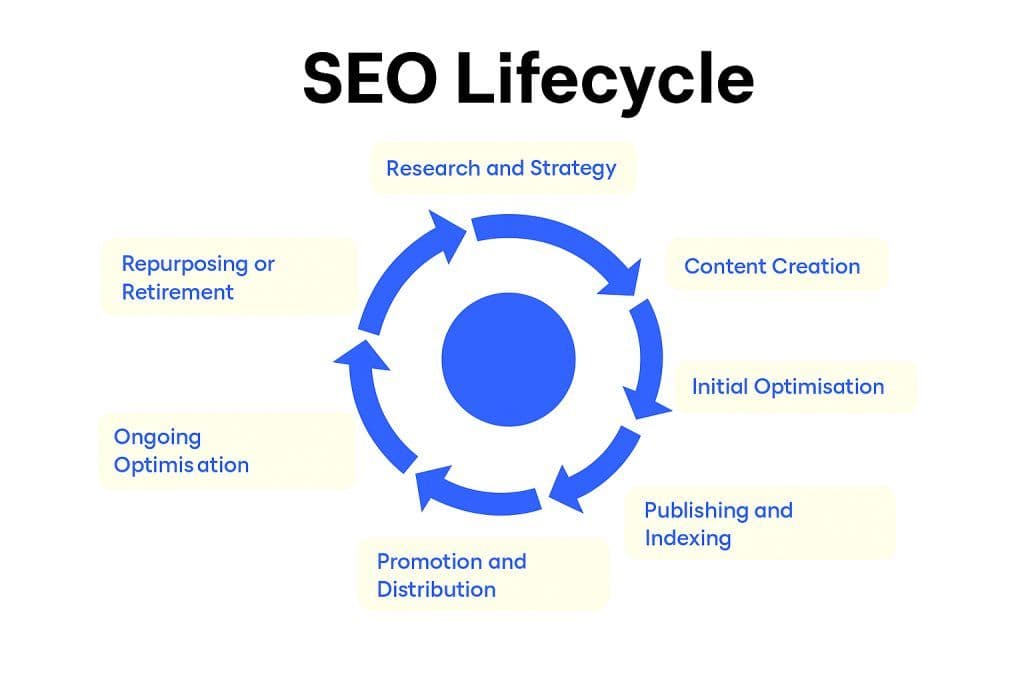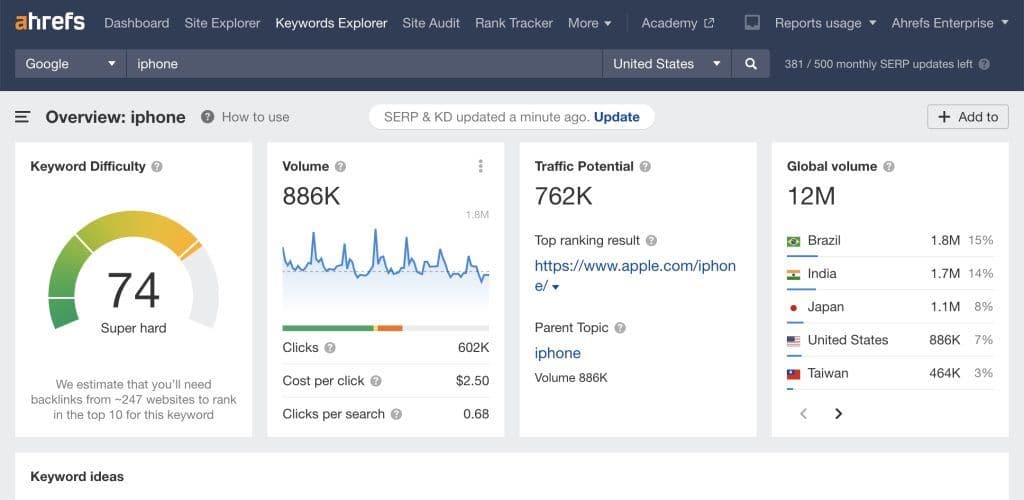
- Research and Strategy
- Content Creation
- Initial Optimisation
- Publishing and Indexing
- Promotion and Distribution
- Performance Monitoring
- Ongoing Optimisation
- Repurposing or Retirement

Stage 1: Research and Strategy
Before you write a single word, you need clarity. What question are you answering? Who are you answering it for, and why might they care? That’s what this stage is about. It’s your opportunity to line up purpose, audience, and competition so that when you do write, you’re writing with intent and direction, not at random.Keyword Research with Intent
Word count and search volume alone won’t cut it. Really dig into why people are searching. Are they trying to learn something? Compare options? Or ready to buy? Understanding search intent ensures your content delivers exactly what readers want.- Use SEO tools like SEMrush, Ahrefs, or Google Keyword Planner to identify high-value keywords.
- Look for long-tail phrases like “seo content lifecycle for beginners” or “stages of seo for B2B websites” for more specific targeting.
- Understand search intent categories: informational, navigational, commercial, transactional.

Audience Persona Mapping
Who’s this for? A small business owner, a seasoned marketer, a curious blogger? Build personas that include their goals and frustrations. It'll help you choose the right tone, examples, and depth to make your content feel relevant. You should consider these attributes when mapping audience persona:- Industry
- Job role
- Problems they face
- How your content solves their issues
Competitive Analysis
There’s no better place to draw the roadmap of your content than taking a peak at your competitors. What’s ranking for your topic? What’s missing or weak about those pieces? That’s your opportunity to stand out, whether that’s through better visuals, fresh data, or a clearer explanation. You can start this competitor analysis by doing a simple Google search. Look at the top 10 search results for your main keyword.- What type of content is ranking? Listicles, guides, opinion pieces?
- What are they missing?
- Can you offer deeper analysis, unique data, or a more engaging format?





